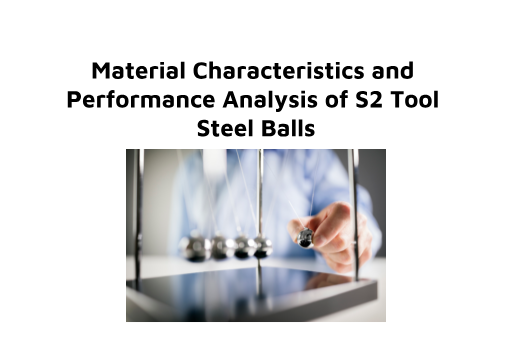
 Home > News
Home > NewsS2 tool steel is a high-performance material known for its exceptional hardness, toughness, and impact resistance. The manufacturing process of S2 tool steel balls involves multiple stages of precision engineering, ensuring the final product meets strict quality standards. This article outlines the key steps and technical points involved in producing S2 tool steel balls.

The process begins with selecting high-quality S2 tool steel. The material’s composition—rich in carbon, silicon, chromium, vanadium, and molybdenum—provides the hardness and shock resistance required for demanding applications. The steel is typically supplied in bar form or billets, which are then cut into smaller sections suitable for forging.
Forging is a critical step where the raw steel sections are heated to a specific temperature and shaped into rough spherical blanks. The forging process enhances the material’s density, eliminates internal defects, and ensures a uniform grain structure, contributing to the ball’s mechanical strength. Proper control of temperature and force during forging is crucial for optimizing the material properties of the S2 tool steel.
After forging, the rough spherical blanks undergo rough grinding to remove excess material and achieve a closer approximation to the final spherical shape. This stage is vital for reducing surface irregularities and preparing the ball for further processing. Precision equipment and careful monitoring are required to achieve the desired size and shape.
Heat treatment is a defining process for S2 tool steel balls, enhancing their hardness and toughness. The balls are subjected to controlled heating followed by quenching and tempering. The exact heat treatment parameters—such as temperature, quenching medium, and tempering duration—are carefully tailored to achieve the desired hardness (typically 58-64 HRC) while maintaining the necessary toughness to resist impact and wear.
Following heat treatment, the balls undergo precision grinding to achieve the required dimensional accuracy and surface finish. This stage involves multiple passes of grinding with increasingly finer abrasive tools. The goal is to bring the ball to its final size, with high precision in terms of diameter, roundness, and surface smoothness.
Lapping and polishing are the final steps in achieving a high-quality surface finish. Lapping involves the use of fine abrasive particles suspended in a liquid medium to remove minute surface imperfections, while polishing gives the balls a mirror-like finish. These processes are crucial for applications requiring low friction and smooth operation, such as in precision bearings.
Quality control is integrated throughout the manufacturing process, but a final inspection is conducted to ensure each batch of S2 tool steel balls meets stringent specifications. Key parameters like hardness, diameter, roundness, surface finish, and material integrity are measured. Advanced testing methods, including non-destructive testing, are often used to detect any internal flaws or surface defects.
Precision in Heat Treatment: The success of S2 tool steel balls hinges on the heat treatment process. Controlling heating and cooling rates is critical for achieving the optimal balance of hardness and toughness.
Surface Finish Quality: Achieving the required surface finish without compromising dimensional accuracy is challenging. Lapping and polishing processes must be carefully controlled to avoid introducing defects.
Dimensional Accuracy: S2 tool steel balls are often used in high-precision applications, making dimensional accuracy crucial. Advanced grinding and measurement techniques are necessary to ensure consistency.
Material Integrity: Ensuring the absence of internal defects, such as cracks or inclusions, is vital for performance and reliability. Sophisticated testing equipment is required to maintain high-quality standards.
The manufacturing process of S2 tool steel balls involves a combination of advanced forging, grinding, heat treatment, and finishing techniques. Each step is critical to producing balls with the high hardness, toughness, and precision required for demanding applications. With the right technical control and quality assurance measures in place, S2 tool steel balls can deliver superior performance in industries ranging from automotive to heavy machinery.
View More(Total0)Comment Lists